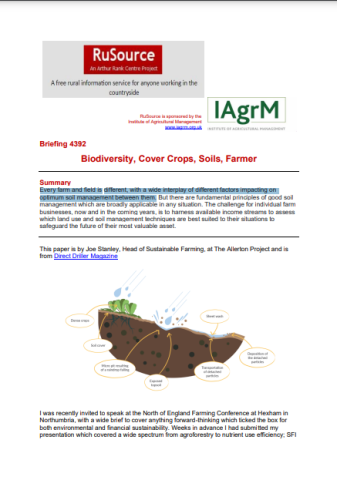Summary
Every farm and field is different, with a wide interplay of different factors impacting on optimum soil management between them. But there are fundamental principles of good soil management which are broadly applicable in any situation. The challenge for individual farm businesses, now and in the coming years, is to harness available income streams to assess which land use and soil management techniques are best suited to their situations to safeguard the future of their most valuable asset.
Download the full resource below.


